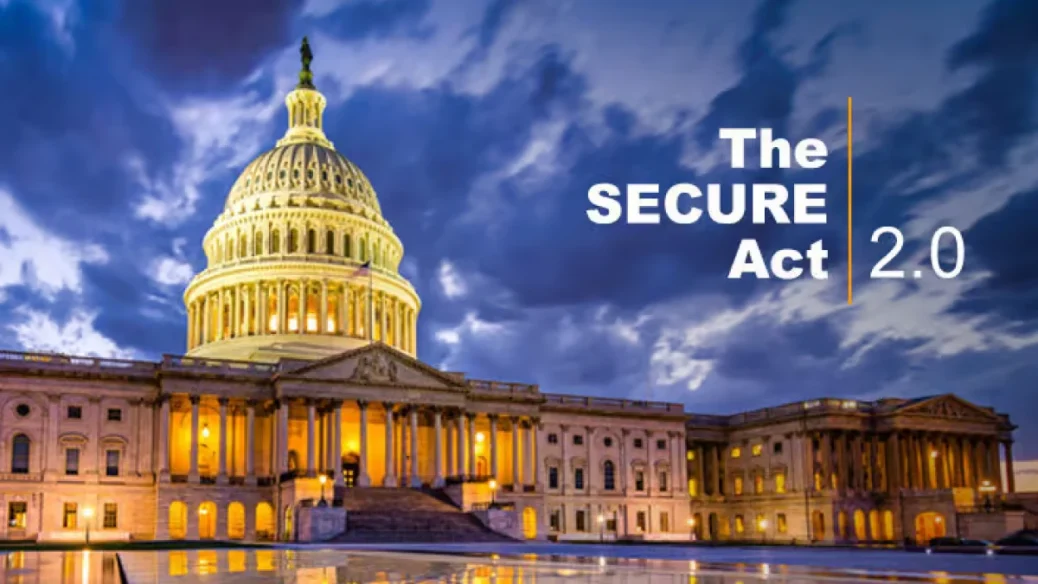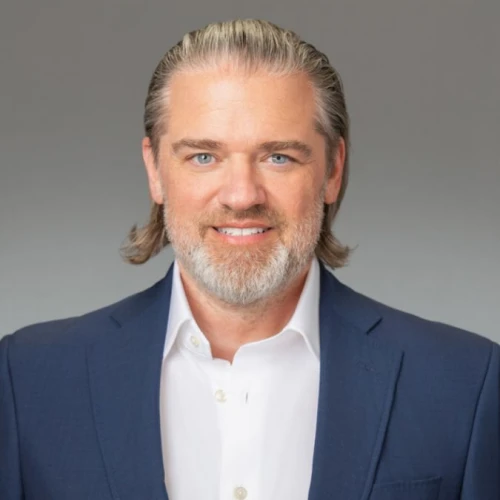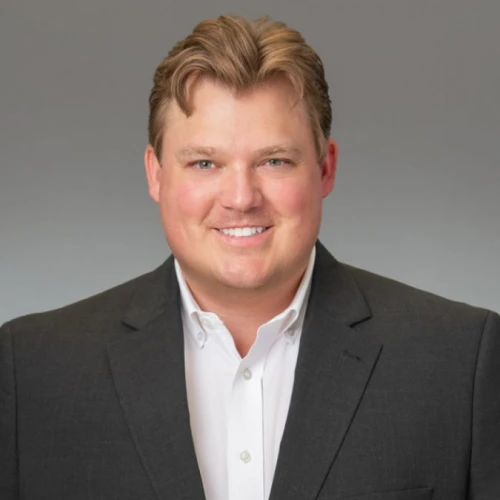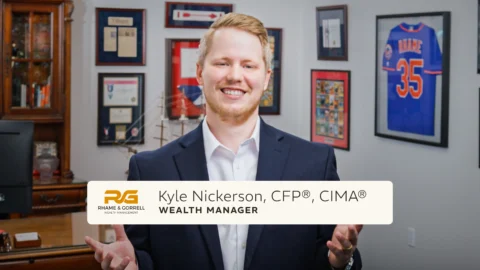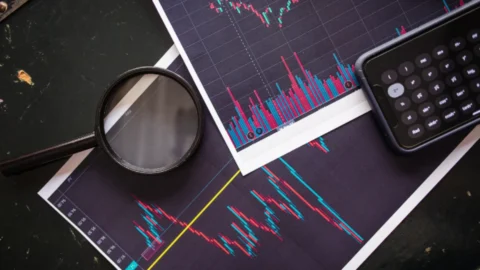What You Need To Know About The SECURE Act 2.0
An Overview Of The Changes And What They Mean For Your Finances
Secure Act 2.0 was signed into law December 29, 2022 as part of a larger omnibus spending bill that was created in order to keep the government funded. The Secure Act 2.0 is meant to build upon the original Secure Act that was passed back in 2019.
The original Secure Act brought about an increase in the Required Minimum Distribution (RMD) age from 70 ½ to 72, the removal of the stretch IRA for inherited IRAs, and the inclusion of some part-time employees in retirement plans. The Secure Act 2.0 brings with it even more changes to retirement funding and accounts.
Thankfully, this act does not take away the Mega Backdoor Roth or Backdoor Roth IRA capability. We have broken down what we believe to be some of the most important inclusions in the Secure Act 2.0 below:
Another increase in RMD age
The second iteration of the Secure Act again increases the RMD age – this time from 72 to 73 for the tax year 2023. It will also be increased to 75 in 2033. It is important to note that those who have already started taking their RMD prior to 2023 are not allowed to stop. This new provision will allow taxpayers to keep their money in tax-deferred accounts longer without the IRS forcing them to make taxable withdrawals.
An Increase in the Catch-Up Contribution Limits
The age that catch-up contributions are allowed to be made will continue to be age 50. However, starting in 2025 the catch-up contribution for 401(k)s and 403(b)s will be increased to the greater of $10,000 or 150% of the catch-up limit for individuals ages 60 – 63. Starting in 2026 the annual catch-up will be indexed for inflation. IRA catch-up contribution amounts of $1,000 will also begin to be indexed by inflation starting in 2024.
One quirk hidden in this section is that if a taxpayer earns more than $145,000, all catch-up contributions at age 50 and older must be made to a Roth account with after-tax dollars. This caveat has been put in place to allow the government to tax more money now instead of allowing taxpayers to delay the taxes until a later date. For more information on the latest tax code, please refer to our 2024 Tax Code Changes article.
529 Plan to Roth IRA rollovers allowed
Some individuals are faced with the dilemma of what to do with unused 529 plan money once a child has finished college. Under the Secure Act 2.0 they are now able to roll 529 college savings plan funds (up to a $35,000 lifetime limit) into a Roth IRA for the 529 beneficiary penalty and tax-free. Please view our 529 to Roth IRA Rollover article for more information.
The 529 account must have been opened for at least 15 years and the funds must be moved to a Roth IRA in the name of the 529 beneficiary. The annual rollover limit is pegged to the yearly IRA contribution limit, which includes contributions made to any IRA. In addition, the amount rolled over plus annual IRA contributions cannot exceed the designated beneficiary’s earned income for the year. The IRS will likely clarify this process in more detail but as it stands this could be a helpful tax and financial planning tool.
The Penalty for missing your RMD is decreasing
Previously if a taxpayer failed to take their RMD the tax penalty was 50% of the amount that should have been withdrawn. This is being decreased to 25%. This penalty is further reduced to 10% if the RMD is corrected in a timely manner for IRAs. Again, the IRS will almost certainly issue guidance on the definition of the term “timely manner”.
No RMD is required on Roth employer retirement plans
Prior to the passing of the Secure Act 2.0, Roth accounts held in employer retirement plans such as 401(k)s and 403(b)s were subject to the same RMD rules as pre-tax assets. With the passing of this new act Roth accounts in employer retirement plans have no RMD requirements for account holders during their lifetime.
401(k) matching contribution based on student loan payments
Many young taxpayers who have student loan debt are faced with the decision to contribute to their 401(k) or to pay off student loans. Under the Secure Act 2.0, 401(k)s are allowed to have provisions that allow employers to contribute to an employee 401(k) in the amount they pay towards their student loans.
This does not mean that it will be offered by all companies 401(k)s as it is a provision that companies must elect to put in their plans. Do not expect smaller employers to offer this provision.
Increase in Qualified Charitable Distribution (QCD) Amount
Previously the maximum allowable QCD amount was $100,000. This amount will start to be indexed for inflation annually. This means that those who are 70 ½ or older and are charitably minded will be able to give more to charities on an annual basis and eliminate taxes on the distributions. For more information on charitable planning, please refer to our Tax-Efficient Tithing article.
Automatic portability of 401(k) accounts
The Secure Act 2.0 is making a push for all 401(k) plans to be automatically portable starting around 2025. This means that if you change jobs and move to a new company your prior 401(k) will be allowed to automatically roll over to your new company’s 401(k) should you elect to do so. This will cut down on the paperwork and logistics of rolling over 401(k)s in the event of a job or career change.
Expanding the use of Roth accounts
The Secure Act 2.0 has greatly increased the ability of taxpayers to store money away for retirement in Roth accounts. The law requires participants to make catch-up contributions to 403(b), 457(b), and 401(a) accounts through a Roth account (unless making less than $145,000). The law will also enable employers to allow employees to elect matching contributions to be deposited to a Roth account versus the current method of forcing all matching contributions to be to a pre-tax account.
Creation of new “Starter K”
This section of the law creates a new 401(k) called the “Starter K”. This plan is supported by the American Retirement Association (ARA) and will help employers that do not currently sponsor a retirement plan offer a starter 401(k) plan (or safe harbor 403(b) plan). There will also be a tax credit available to employers that initiate one of these new plans
Conclusion
The Secure Act 2.0 has just recently passed and there is still a significant period of adjustments as Congress and the IRS “unpack” the various provisions. As usual, once the IRS looks at the law they will come out with more guidelines and interpretations on how to apply the provisions.
As we saw this year with the confusion surrounding the inherited IRA rules as they relate to RMDs, the government will frequently take quite some time to sort everything out. The upcoming changes as a result of a reversion of the Tax Cuts & Jobs Act (TCJA) are also relevant right now. As always, our team is happy to answer any follow-up questions as they arise.
Need Some Help?
If you’d like some help from one of our CPAs or CERTIFIED FINANCIAL PLANNER (CFP®) advisors regarding this strategy and how it applies to you, the Rhame & Gorrell Wealth Management team is here to help.
Our experienced Wealth Managers facilitate our entire suite of services including financial planning, investment management, tax optimization, estate planning, and more to our valued clients.
Feel free to contact us at (832) 789-1100, [email protected], or click the button below to schedule your complimentary consultation today.
IMPORTANT DISCLOSURES:
Corporate benefits may change at any point in time. Be sure to consult with human resources and review Summary Plan Description(s) before implementing any strategy discussed herein.Rhame & Gorrell Wealth Management, LLC (“RGWM”) is an SEC registered investment adviser with its principal place of business in the State of Texas. Registration as an investment adviser is not an endorsement by securities regulators and does not imply that RGWM has attained a certain level of skill, training, or ability. This material has been prepared for informational purposes only, and is not intended to provide, and should not be relied on for, tax, legal or accounting advice. You should consult your own CPA or tax professional before engaging in any transaction. The effectiveness of any of the strategies described will depend on your individual situation and should not be construed as personalized investment advice. Past performance may not be indicative of future results and does not guarantee future positive returns.
For additional information about RGWM, including fees and services, send for our Firm Disclosure Brochures as set forth on Form ADV Part 2A and Part 3 by contacting the Firm directly. You can also access our Firm Brochures at www.adviserinfo.sec.gov. Please read the disclosure brochures carefully before you invest or send money.
